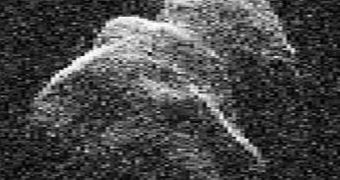Given the propensity that life-supporting planets in the Universe have for being struck by comets, experts believe that we need to develop a system of ensuring that doesn't happen anytime soon.
They explain that there are literally tens of thousands of asteroids, meteorites and comets out there, some of which are on dangerous courses, that could one day take them towards a head-on collision with our planet.
These space bodies, called near-Earth objects (NEO), should make the object of a permanent survey, being carried out at a planetary level. After all, such a monitoring system would ensure that our civilization is not wiped out in a single blow.
Granted, there aren't many NEO that could cause a planetary extinction (though that scenario is not excluded), but there are quite a few that could devastate entire continents. It's those that we need to be on the lookout for, astronomer say.
What's really interesting about this whole thing is that only two small infrared telescopes, located on opposite sides of the planet, could keep track of most NEO, and provide the early warning we need.
The investment necessary for this would not exceed whatever money is put into creating a decent-size ground observatory from scratch. All that is needed for a pertinent NEO defense to be up in a couple of years is the political will to do so.
Collisions between planets and objects close to them are not rare. Astronomers observed several in our solar system in the last two decades alone, and 20 years is a fleeting glimpse in cosmic time.
On the other hand, there hasn't been a major collision between Earth and a NEO in more than 65 million years. The last was at the Cretaceous-Tertiary boundary, when the dinosaurs were killed.
Recently, NASA completed the NEOWISE mission, which used the Wide-field Infrared Survey Explorer (WISE) to look for NEO in our immediate surroundings, Daily Galaxy reports.
“We are taking a census of a small sample of near-Earth objects to get a better idea of how they vary,” explains NEOWISE principal investigator Amy Mainzer.
She adds that the telescope identified more than 11,000 new NEO and Main Asteroid Belt objects. “Our data pipeline is bursting with asteroids,” confirms WISE principal investigator Ned Wright.
“We are discovering about a hundred a day, mostly in the Main Belt,” explains Wright, who is based at the University of California in Los Angeles (UCLA).

 14 DAY TRIAL //
14 DAY TRIAL //